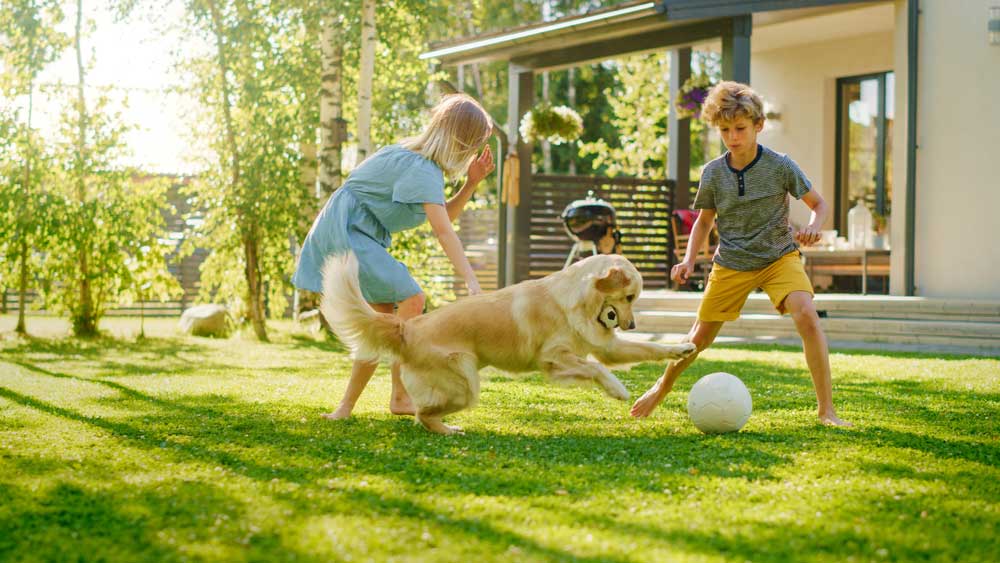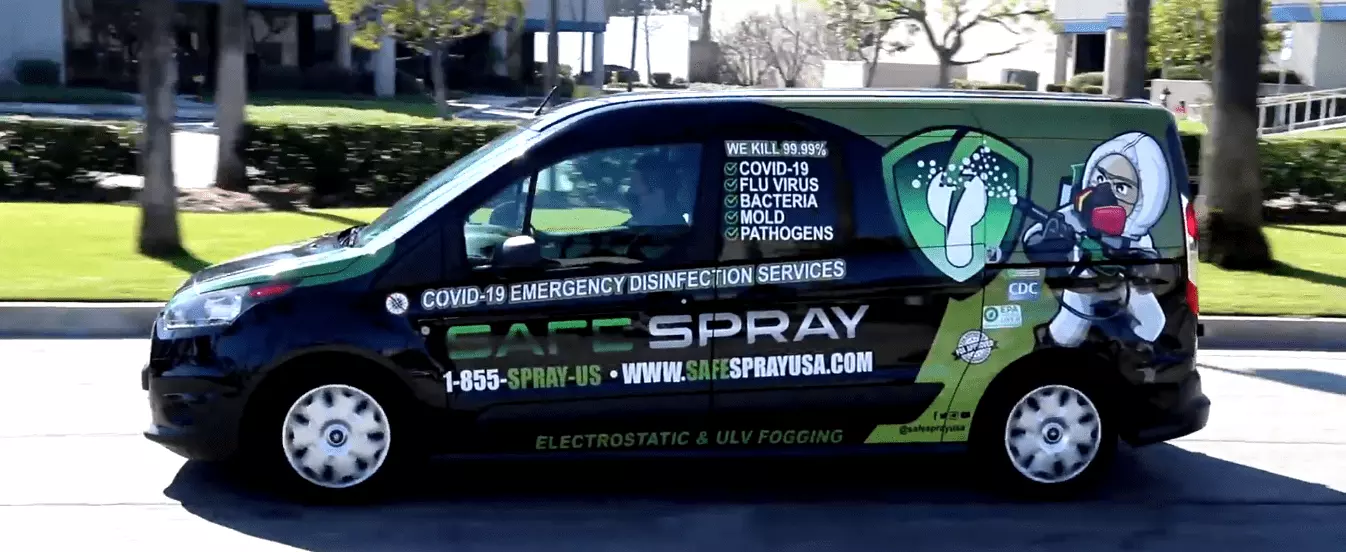Get a Free Estimate
Your information will not be shared. Safe Spray will send you a custom estimate.

Parvovirus, also known as parvo, is a highly contagious viral infection that primarily affects dogs, particularly puppies and unvaccinated dogs. This resilient virus can survive in the environment for an extended period, posing a significant risk of transmission to other dogs. Proper sanitizing and disinfecting of the environment are necessary steps in preventing the spread of parvovirus and protecting the health of our beloved canine companions.
What is Parvovirus in Dogs?
Parvovirus is a highly contagious viral infection caused by canine parvovirus (CPV). The virus primarily affects the gastrointestinal tract, leading to severe vomiting, diarrhea, dehydration, and in some cases, death, especially in young puppies. Parvovirus is resistant to many common disinfectants and can survive in the environment for months to years, making it challenging to eradicate.
How to Sanitize and Disinfect
If you’ve had a parvovirus infection in your home, neighborhood, or kennel, there are some relatively simple ways to clean your home and yard to prevent further infection.
1. Remove Waste and Other Organic Material:
Before disinfecting, you will need to remove any organic material such as feces, vomit, or soiled bedding from the environment. Use gloves and disposable materials to avoid direct contact with contaminated surfaces.
2. Use an Effective Disinfectant:
Not all disinfectants are effective against parvovirus. Choose a virucidal disinfectant specifically formulated to kill canine parvovirus. Common disinfectants that are effective against parvovirus include accelerated hydrogen peroxide, quaternary ammonium compounds, and sodium hypochlorite (bleach).
3. Disinfecting Outdoors:
Here are some simple steps for how to get rid of parvo from your yard.
- Dilute bleach solution: Mix 1 part bleach with 32 parts water (1:32 ratio).
- Apply the solution to outdoor surfaces such as concrete, gravel, and grass where parvovirus may be present.
- Allow the solution to sit for at least 10 minutes before rinsing thoroughly with clean water.
- Avoid using bleach on porous surfaces such as wood or soil, as it may not penetrate effectively.
4. Disinfecting Indoors:
- Dilute bleach solution: For indoor surfaces such as floors, walls, and kennels, use a bleach solution with a 1:32 ratio (1 part bleach to 32 parts water).
- Apply the solution to the affected areas, ensuring thorough coverage.
- Allow the solution to remain in contact with the surfaces for at least 10 minutes before rinsing or wiping clean.
- Ventilate the area well during and after disinfection to minimize exposure to bleach fumes.
What Kills Parvo Besides Bleach:
What kills the parvo virus? Bleach is one of the most effective disinfectants for killing parvovirus. It can be used to sanitize both indoor and outdoor environments. However, bleach should be used with caution and properly diluted to avoid damage to surfaces and potential toxicity to pets. Other solutions that will work include:
1. Accelerated Hydrogen Peroxide:
Accelerated hydrogen peroxide is another effective virucidal disinfectant that can be used to kill parvovirus. It is safer to use than bleach and may be preferred for indoor environments or areas where bleach is not suitable.
2. Quaternary Ammonium Compounds (Quats):
Quaternary ammonium compounds, commonly known as quats, are effective against parvovirus and are often found in veterinary disinfectants. They are less corrosive than bleach and may be suitable for use on a variety of surfaces.
3. Potassium Peroxymonosulfate
Potassium peroxymonosulfate is an effective disinfectant against parvovirus. It works by oxidizing and destroying the virus’s protein coat, rendering it inactive. This powerful disinfectant is commonly used in veterinary settings to sanitize surfaces and prevent the spread of parvo.
Frequently Asked Questions: Canine Parvovirus
Q: Can I use regular household cleaners to disinfect against parvovirus?
Many household cleaners are not effective against parvovirus. While bleach can kill the virus, contact professionals who use a disinfectant that’s effective at killing the virus for the best results.
Q: How long does parvovirus survive on surfaces?
Typically, parvovirus can survive on surfaces for 5 to 6 months, depending on environmental conditions such as temperature and humidity.
Q: Can I use bleach to disinfect for parvovirus?
Yes, bleach is effective against parvovirus. Use a solution of 1 part bleach to 32 parts water (1:32 ratio) for disinfection.
Q: Are there any disinfectants specifically designed to kill parvovirus?
Yes, there are disinfectants formulated specifically to kill parvovirus. Look for products labeled as effective against canine parvovirus.
Q: Can I use sunlight to disinfect surfaces contaminated with parvovirus?
While sunlight exposure may help reduce the viability of parvovirus, it’s not a reliable method for complete disinfection. Use proper disinfectants for thorough decontamination.
Q: How often should I disinfect surfaces to prevent parvovirus transmission?
Disinfect surfaces regularly, especially in areas where dogs congregate or where there has been known parvovirus contamination.
Q: Can parvovirus survive in soil?
Yes, parvovirus can survive in soil for an extended period, posing a risk of transmission to dogs that come into contact with contaminated soil.
Q: Is it safe to use disinfectants around pets?
Follow the manufacturer’s instructions for safe use of disinfectants around pets. Ensure proper ventilation and allow surfaces to dry before allowing pets back into treated areas.
Q: Can I use hydrogen peroxide to disinfect for parvovirus?
Hydrogen peroxide may have limited effectiveness against parvovirus. It’s best to use disinfectants known to be effective against the virus.
Q: Can parvovirus be transmitted through contact with infected feces after disinfection?
Proper disinfection can reduce the risk of parvovirus transmission from contaminated surfaces. However, always practice good hygiene and avoid contact with feces to minimize the risk of transmission.
Contact Safe Spray to Disinfect Your Home Against Parvovirus
Sanitizing and disinfecting the environment after a parvovirus outbreak is essential for preventing the spread of the virus and protecting the health of dogs. By following proper sanitation and disinfection protocols, pet owners can effectively eliminate parvovirus from both outdoor and indoor environments.
Remember to use appropriate disinfectants, such as bleach or virucidal agents, and follow manufacturer’s instructions for safe and effective disinfection. With thorough cleaning and disinfection measures in place, pet owners can create a safe and healthy environment for their canine companions, reducing the risk of parvovirus transmission and ensuring their well-being.
If you’re looking for professional and effective disinfection, contact Safe Spray today to treat your home, yard, veterinary office, or kennel.

Get Your Free Quote Today!
We also offer a no obligation, free onsite service estimate.

 Get a free Consultation
Get a free Consultation